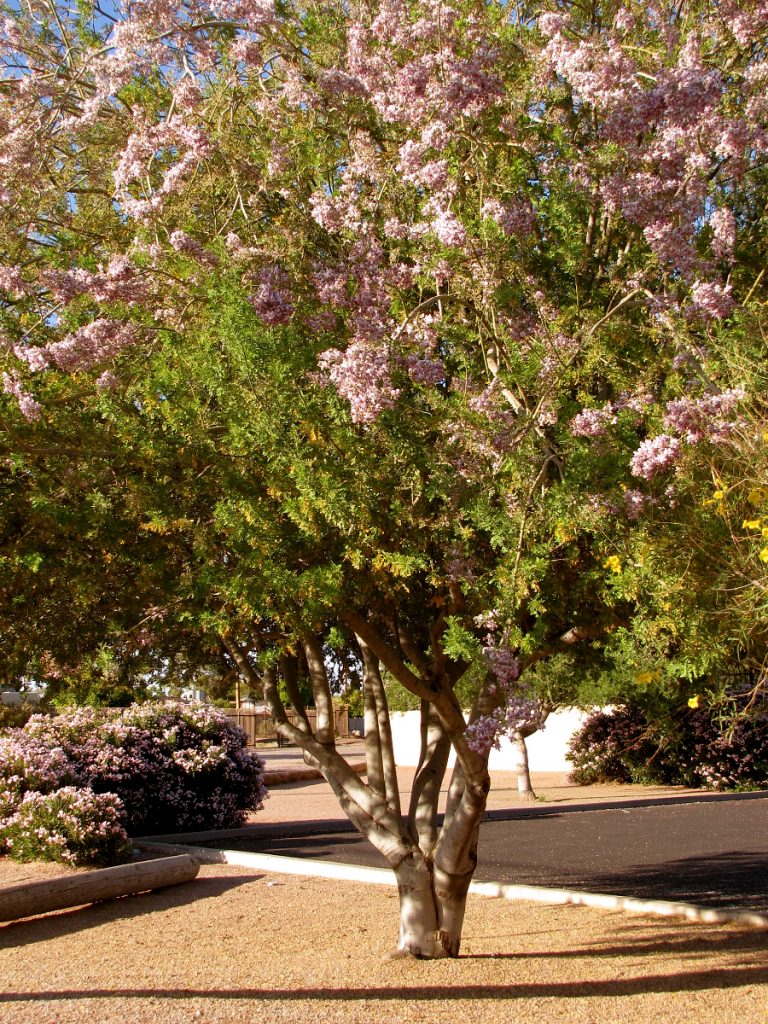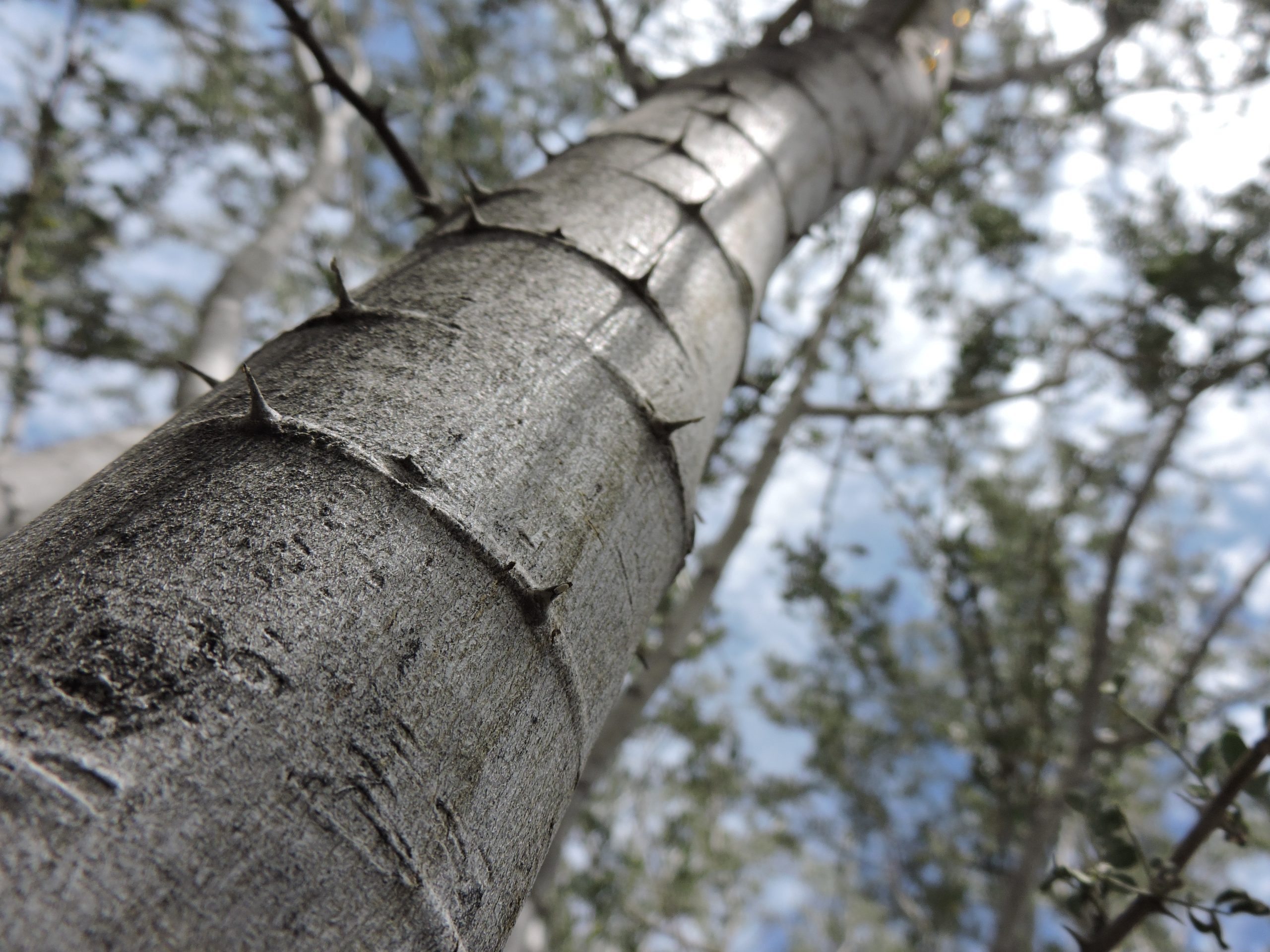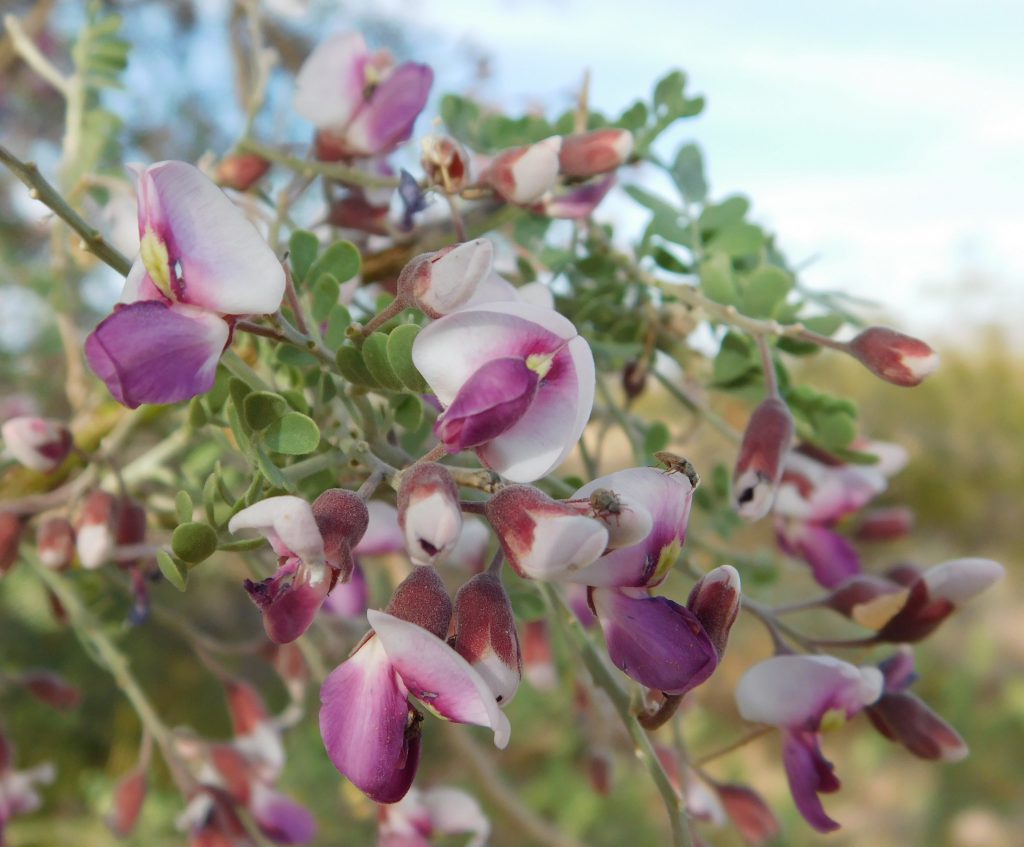Feeling melancholy as you sweep up the spent yellow petals of your Palo Verdes? I understand why: when the “month of monochrome yellow” is behind us, the baking summer is upon us, and most plants (and people!) sober up to prepare. Don’t despair yet, though—late spring wildflowers still surround Saguaros wreathed like brides with white blooms. And, now is the time for Desert Ironwood to take the stage, it’s purple blossoms so easy on the eye after all that yellow… and what a truly remarkable tree.
The Ironwood (Olneya tesota) is the only species in its genus and is named for its extremely dense heartwood that is so heavy that it does not float. This density is thought to be why the tree is so slow growing, much more so than its more sprightly neighbors, the Mesquite and Palo Verde. In addition, Ironwood heartwood is almost non-biodegradable due to mineral deposits, and because they resist saprophytes (a plant, fungus, or microorganism that lives on dead or decaying organic matter) and are toxic to termites, dead trees persist long after life has left them. They bear witness to desert happenings like silent stones, worn only by wind and water.

In life, the Ironwood provides riches both above and below the soil. Because it is a wickedly thorny and densely branched tree, over 500 desert critters (some 250 of them plant species) find protection beneath these sheltering, yet unforgiving, arms. The space beneath the Ironwoods’ generous canopy is home to so many of the desert’s banal miracles: seeds sprouting, tiny hummingbirds fledging, rabbits escaping a coyote’s snapping maw. As if that wasn’t enough, Ironwoods also provide nutritious pods that mature in mid to late summer when little else is available. At and below the soil, the Ironwood acts as a habitat-modifying keystone species by enriching the soil with nitrogen (as do Mesquite and Palo Verde) making germination and early growth possible for many desert plants. Further, the Ironwoods’ diffuse canopy moderates surface temperatures by about 10 degrees, thereby protecting plant youngsters from desert extremes. Although well-known for these functions as a “nurse tree”, scientists are just discovering how long-lived the trees can be—some have been dated to 800 to 1,500 years old—making Ironwood the first and oldest desert nurse tree! The take-home message here is that when you plant an Ironwood, it will probably be around, doing good stuff, for a LONG time!
For Arizona’s birds, Ironwoods provide not only protection but a bountiful supply of insects drawn to the trees’ ample blooms. Gardeners find that Ironwoods can coax even desert die-hards like the tiny Black-tailed Gnatcatcher and the lovely, somewhat vocal Ash-throated Flycatcher from the lonely wilds to the suburban yard. Your garden regulars like Abert’s Towhee, Verdin, and Northern Mockingbird will also appreciate this tree.

Clearly, Ironwoods have high ecological value, but besides attracting cool birds, what can this tree do for the home gardener? Quite a lot, it turns out: for one, they can survive in very dry conditions–Ironwoods’ drought tolerance rivals superstars like Creosote (Larrea), so this is no desert lightweight. Do note that if water-starved, Ironwoods will lose every single tiny grey-green leaf, but will bounce back to life with the first drenching monsoon. Ironwoods also make excellent specimen trees, if you are patient enough to let them grow into their charm. Although their natural habit is brushy-based, they will tolerate pruning and can be gracefully manicured into sinuous garden backdrops thereby highlighting their elegant silver-grey bark. Remember, too, those lovely purple flowers that seem to appear right on cue post “yellow flower time” to distract us (at least momentarily) from the coming summer inferno. Speaking of which, as you prepare yourself for the summer heat, find solace in that it will not last forever – but your newly planted Ironwood will come pretty close. Happy planting!
You may be interested in these other related articles:
- Plant of the Month: Desert Hackberry | Plants for Birds – Part 1
- Plant of the Month: Chuparosa | Plants for Birds – Part 2
- Audubon’s Native Plant Database
- 10 Pruning Tips for Healthier, Prettier Desert Trees
Did you know that up to 70 percent of water use is outdoors? That’s why we love desert plants and feature them each month. You can learn more about Ironwood and other plants on our Arizona Low-Water-Use Plants page. Visit our page on Choosing and Planting Low Water-Use Plants for tips on plant selection and how to plant properly. Also, be sure to read through all of our featured Plant of the Month blogs!
Water – Use It Wisely is proud to feature guest bloggers who write about topics related to water and water conservation. The author of this blog post, Cathy Wise, is the education director with Audubon Arizona, whose mission is to protect birds and the places they need, today and tomorrow, using science, advocacy, education, and on-the-ground conservation.
Photographer Steve Prager is an important bird area program associate & teacher/naturalist with Audubon Arizona.


